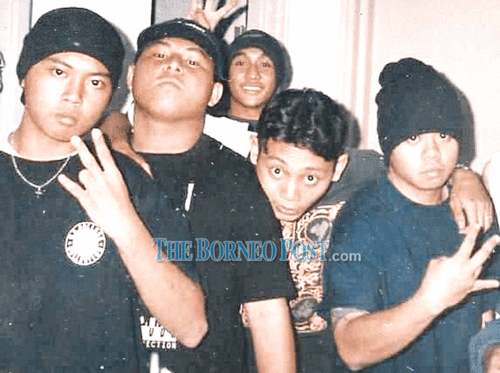The Voices of Borneo: the Story of Desmond Hill and Chris Zafri’s “Borneo Menace” Collective

The Voices of Borneo: the Story of Desmond Hill and Chris Zafri's "Borneo Menace" Collective
While in my first blog post, I wrote about Southeast Asian hip hop from a more general perspective, particularly through the lens of a multimillion dollar, global record label Def Jam, much of the work to grow the hip hop community has also been at the ground level. One notable pair of brothers doing this work is profiled in “Keeping the hip hop beat alive” by Matthew Umpang of the Borneo Post. They are Desmond Hill and Chris Zafri, who are from Kuching, Sarawak, on the Malaysian portion of Borneo Island (the island itself is divided into portions of Malaysia, Brunei, and Indonesia).
The theme of technology is present here as well, as much of the brothers’ presence and influence comes from YouTube. Together, they form the Borneo Menace collective, working on music development in their hometown. The name of their collective reflects both their deep connection to their homeland and the aggressive side of their music. At first, they were both just casual hip hop fans at a time when the genre was not popular at all in Southeast Asia, but as the popularity of hip hop grew in the overall region, they began to curate a hip hop culture in their local community.
Through Borneo Menace, their current model has them creating beats, and then calling for local artists to submit their vocal tracks to their beats, to be spliced together into a full song. It’s a loose collaboration, with no obligation for the artists besides agreeing to have their vocals used. The brothers handle all other aspects, from artwork design to distribution. For now, they have batches of beats, and different artists will often rap on the same beat. Their collective stretches not just for various towns in Sarawak, but also to Sabah, and the neighboring Brunei and Indonesia regions.
Due to the recent COVID-19 pandemic, the Borneo Menace platform has become even more relevant and accessible for fans under home confinement due to the Movement Control Order (MOC). Now, they have expanded to include 34 full-time artists, such as Knowno Hornbill, Silooman, A-Chill, and DoubleEKStudio. They now hope to get more sponsor so that they can expand their influence and help artist across the entire Borneo Island.
I was particularly intrigued by the root motivation behind it all, which often can get lost in big labels like Def Jam. In the end, the brothers of Borneo Menace see hip hop as a source of positivity, to challenge norms and to promote intelligence through critical thinking and artistic innovation. It’s a source of passion not just for them, but for a multitude of young artists across Borneo and Southeast Asia, all seeking to have their voices and perspectives heard. How incredible that there are people like Desmond and Chris seeking to find these voices and to make sure that they are illuminated.
Comments
Josh,
I like how you are getting incrementally more fine-grained in your analysis. Sometimes, it is possible to find the universal hiding in the particular. The next step, of course, is to listen to the music itself. What can you say about the music produced by Borneo Menace? Can’t wait to read your paper, which I hope sticks with theis fascinating topic.
Pages